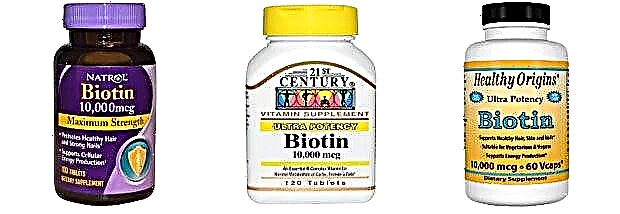Glycine is a proteinogenic amino acid used by the body to build proteins. This compound also acts as the basis for the formation of molecules of creatine, porphyrin, serotonin, and purine nucleotides in cells.
Preparations with this amino acid are used in medicine as neurometabolic stimulants. In sports nutrition it is used more often as a food additive that modifies the taste and smell of the product, sometimes as a sedative component.
Effect on the body
Glycine is a neurotransmitter acid. In the brain and spinal cord, glycine sensory neurons are the most abundant inhibitory receptors.
By joining them, this amino acid reduces the release of excitatory substances from nerve cells and increases the release of gamma-aminobutyric acid, the most important inhibitory neurotransmitter of the central nervous system. Glycine also has an inhibitory effect on the neurons in the spinal cord, which are responsible for maintaining muscle tone and motor coordination.

Glycine has the following effects:
- decrease in emotional stress;
- decrease in aggressiveness;
- improving the ability to social adaptation;
- increased emotional tone;
- facilitating falling asleep, normalizing sleep;
- reducing the negative consequences of exposure to toxic substances on brain tissue (including ethanol, toxic compounds of medications);
- restoration of the structure and function of brain cells after trauma, inflammation, and ischemia.
Glycine molecules are small, so they freely enter the tissues and body fluids, overcome the blood-brain barrier. In cells, the compound breaks down to water and carbon dioxide, which are easily eliminated, therefore, glycine does not accumulate in tissues.
Application in medicine
Glycine is used mainly in neurological practice as a nootropic and anti-anxiety drug, a mild antidepressant. It is prescribed to patients taking heavy antipsychotics, antipsychotics, strong hypnotics, anticonvulsants to reduce the intensity of negative side reactions.

Also, the amino acid is used by some narcologists in the treatment of withdrawal syndromes developing against the background of the withdrawal of alcohol, opiates and other psychoactive substances, as a sedative, tranquilizer. Sometimes it is prescribed to improve memory and mental performance, associative processes.
1.5% glycine solution is used during transurethral surgery in urological practice to flush the urethra.
Indications for use
Indications for taking drugs with amino acid:
- decrease in intellectual performance;
- being in a state of stress, serious emotional stress for a long time;
- social deviation of children and adolescents;
- ischemic stroke;
- vegetative dystonia;
- neuroses and neurosis-like states;
- various forms of encephalopathy (including those developing in the prenatal period);
- pathologies of the central nervous system, characterized by disturbances in the psychoemotional background, sleep disorders, excessive excitability, deterioration in intellectual abilities.
Glycine is recommended to be taken to reduce the effects of traumatic brain injury, infectious diseases of the brain.
The annotation says that the drug has no contraindications. The exception is cases of individual intolerance to the substance. An amino acid is prescribed even for pregnant and lactating women, but the remedy can be taken only after consulting a doctor.
The benefits of glycine for athletes
Glycine is essential for athletes, like all other amino acids, from which the body builds protein molecules.
It is important to use it with food, and additional intake is recommended only during periods of increased stress, especially psycho-emotional. For athletes, this is the time of competition, when not only good physical data are needed, but also the ability to assess the situation, to concentrate on achieving the goal. Calmness, endurance, high mental performance are necessary in sports no less than excellent strength, speed and other indicators.
Typically, athletes take glycine in courses of 2-4 weeks during pre-competition training and the competition itself. It improves mood, enhances motivation, and reduces stress levels.
The amino acid allows you to collect as much as possible, promotes speedy recovery under intense stress.
Glycine deficiency
Lack of glycine in the body is manifested by the following symptoms:
- decreased immune status;
- slowing down of protein metabolism;
- increased risk of injury;
- deterioration of the condition of hair, nails, skin;
- disruption of the digestive system.
The lack of this amino acid in the body is reflected in the production of growth hormone.

Food sources of glycine
Like other amino acids, humans get glycine from food. Its main sources are:
- legumes (soybeans, peanuts);
- beef;
- hen;
- meat offal, mainly beef and chicken liver;
- nuts;
- cottage cheese;
- pumpkin seeds;
- chicken, quail eggs;
- cereals, especially buckwheat, oatmeal.
Usage rates
In a period of strong emotional stress, glycine is recommended to be taken 2-3 times a day, 1 tablet (100 mg of pure substance). The product is taken sublingually (under the tongue), without regard to meals.
For sleep disorders, problems with falling asleep due to emotional experiences, glycine is taken at night, 20-30 minutes before going to bed, 1 tablet.
Side effects
In some cases, when taking an amino acid, skin allergic reactions develop in the form of skin rash, itching, urticaria.
Glycine overdose was not recorded. This is due to the fact that this compound is naturally present in tissues, and the body will always find use for the amino acid.
If negative side effects develop while taking the drug, you should discontinue use and consult a doctor for advice.
Glycine is an over-the-counter drug and can be purchased freely at any pharmacy. The cost of packaging the cheapest drug of 50 tablets is about 40 rubles, depending on the manufacturer, prices vary greatly.

Research
For the first time, glycine was isolated and described by the French chemist and pharmacist Henri Braconneau. The scientist obtained sweet crystals during experiments with gelatin in the 20s of the 19th century. And only in 1987 were the cytoprotective properties of this amino acid described. It was found that it promotes the restoration of living cells after hypoxia. Experiments on animals have shown that this compound is used by the body to neutralize the effects of ischemia - a violation of blood supply.
However, under conditions of severe stress, for example, with ischemic stroke, glycine temporarily becomes a conditionally essential amino acid, that is, it cannot be synthesized by the body.
When introduced from the outside, it perfectly protects cells from oxygen starvation. Presumably, glycine reduces the permeability of the cell membrane, thereby maintaining electrolyte balance and preventing the destruction of the cell structure.
Basically, Russian scientists are engaged in studies of the properties of the amino acid, in the West it is recognized as ineffective and is practically not studied. The compound's only use in the United States is as an irrigation solution for transurethral interventions.
Russian scientists are more busy researching the nootropic, tranquilizing, antitoxic, antidepressant properties of glycine. Some of them have shown the effect of this compound in eliminating sleep disturbances.

Showed glycine and neuroprotective effect: when taken in the first 3-6 hours after ischemic stroke, the drug reduces the extent of its effects. Also, Russian scientists came to the conclusion that the use of the amino acid has a sedative effect as a nootropic.
Western colleagues do not share the point of view of Russian researchers, believing that all observed actions are due to the placebo effect. Indeed, it has not yet been possible to substantiate the effectiveness of the drug using evidence-based medicine.
Outcome
We can say that glycine has a positive effect, but its mechanism has not been established. It may be a placebo, but quite effective. In any case, there will be no negative effects from taking this drug, even in high dosages, which makes it possible for doctors to prescribe it without fear to a wide range of patients.









